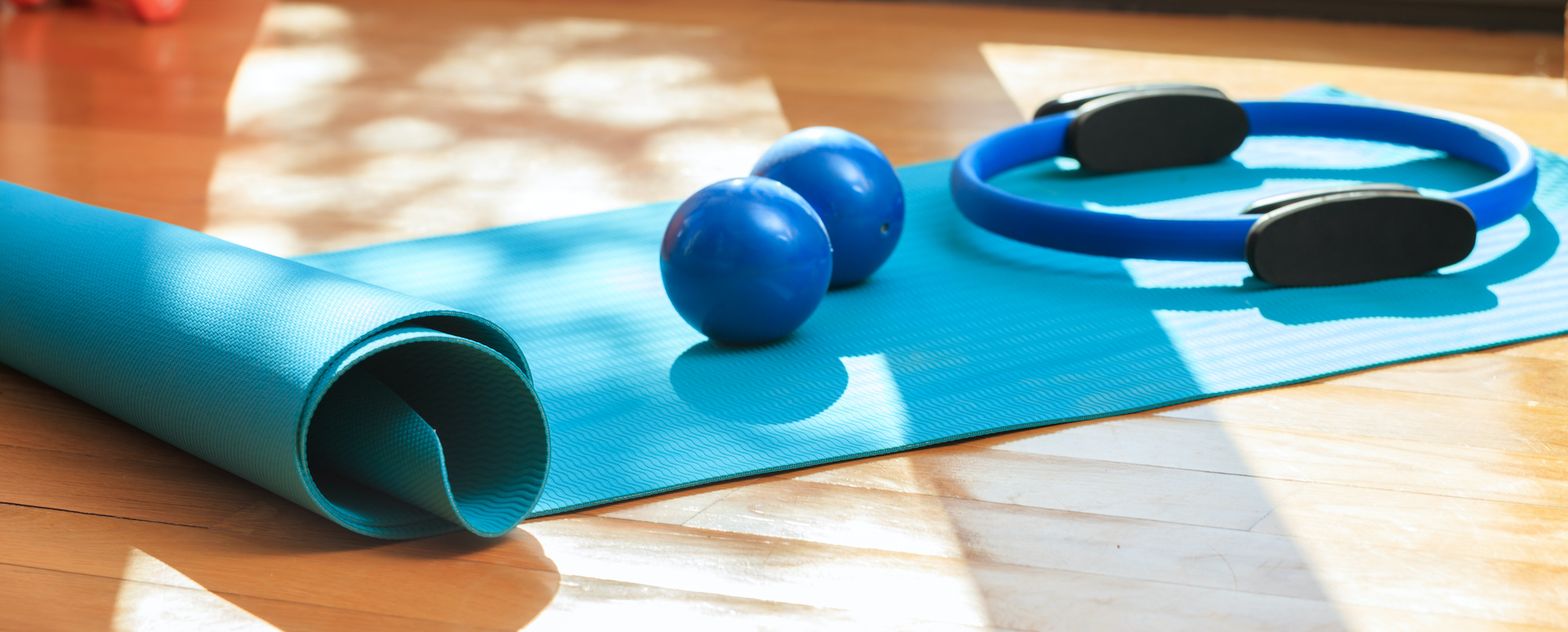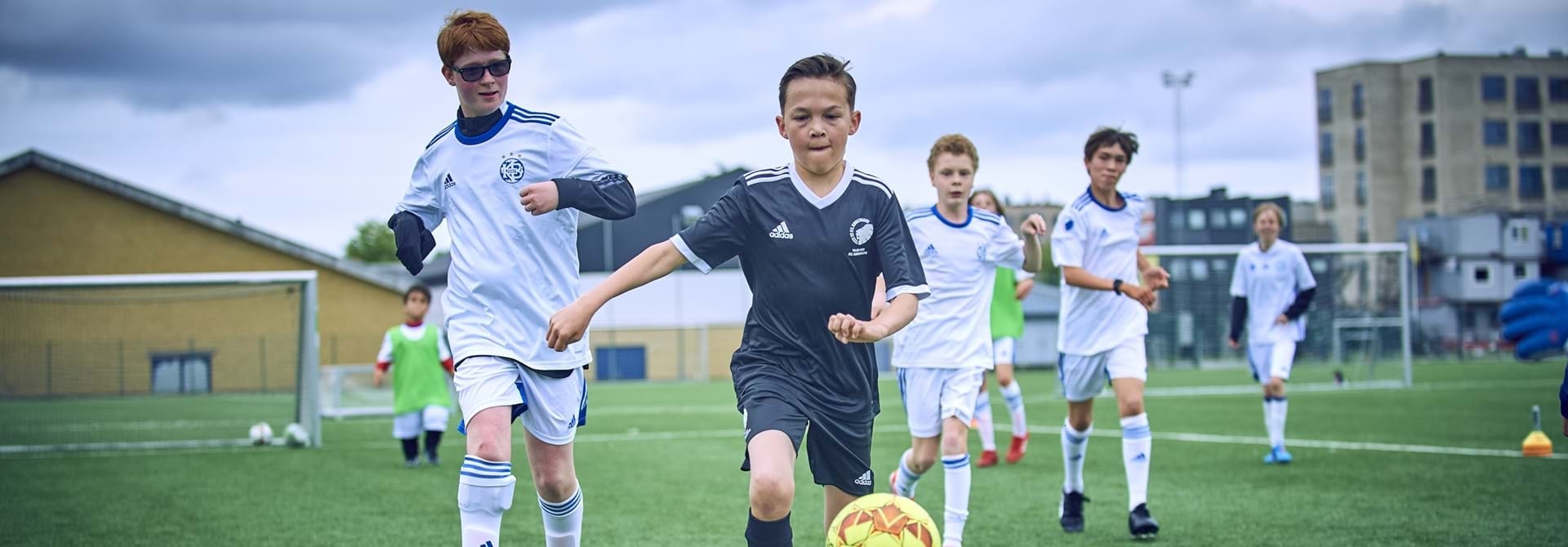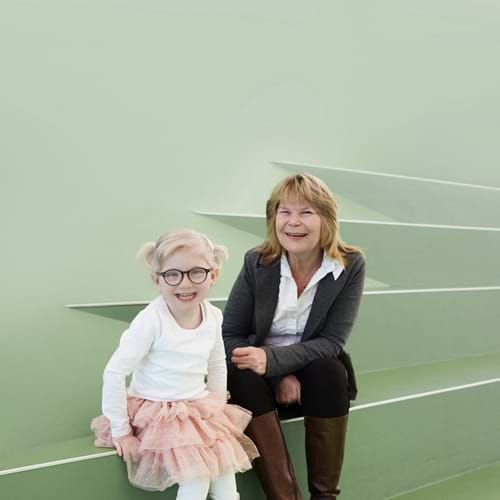Activity and training
Physical activity is important for everyone, but it can have special significance for people with Cerebral Palsy (CP). Physical activity includes training, exercise, sports, and everyday movement.
Everyone can experience health benefits from physical activity in daily life. Whether it's exercise, sports, or just everyday movement, it positively impacts our cognitive and motor functions. For people with functional limitations like CP, physical activity can be particularly valuable because it can directly improve their quality of life.
Several studies indicate that children and young people with CP are generally less physically active during the week, spend less time playing sports, and take fewer steps than their peers without CP.
Additionally, they have nearly twice as much sedentary time than the Danish Health Authority (Sundhedsstyrelsen) recommendation. Since the trend is similar for adults with CP, it’s important to understand the benefits of physical activity for people with CP.
What are the benefits of physical activity for people with CP?
Making physical activity a priority in daily life offers many benefits. Physical activity enhances general well-being, both physically and mentally.
When you have CP, a physically active lifestyle can also impact your social life and well-being. For instance, physical activity can reduce the extreme fatigue that affects many people with CP. It can also reduce the degree of functional loss that some people with CP experience in adulthood.
Physical activity is just one of several elements that have a positive impact on health and well-being. Other important elements include good sleep and a ‘brain-friendly’ diet and nutrition.
Listed below are some of the benefits of physical activity:
STRONGER MUSCLES
Physical activity helps strengthen muscles and maintain or even improve mobility. This includes reducing the risk of joint misalignment or contractures, i.e., tight, shortened muscles. An active lifestyle can lead to more independent mobility and make daily tasks easier to perform.
The Danish Health Authority recommends that children and young people participate in strength training three times per week and adults twice per week.
BETTER BALANCE AND COORDINATION
Exercises, activities, and games that focus on balance and coordination can improve vestibular function and reaction speed. This helps prevent falls and improves general movement ability.
BETTER HEALTH AND MORE ENERGY
Being in better shape can give you more energy and better overall health. This can be achieved through daily activities, particularly high-intensity activities. Daily activities might include actively participating in transfers or getting dressed, emptying the dishwasher, taking the stairs, or biking to school or work. High-intensity activities elevate your heart rate, and there are numerous choices. They can include roughhousing, frame running, boxing, playing football, going to the gym, jumping on a trampoline, and more.
BETTER MENTAL STATE
Physical activity is crucial for maintaining good mental health. It releases endorphins, which can improve mood, reduce stress, and boost self-esteem. Because teenagers and young adults with CP are at a slightly increased risk for depressive symptoms and anxiety, mental well-being is a key benefit.
LARGER SOCIAL NETWORK
Participation encourages engagement: If you have the desire, ability, and courage to join a physical activity community, it can help you stay engaged in meaningful activities. It can also give you the confidence to participate socially in other contexts.
IMPROVED MOTOR LEARNING AND LONG-TERM MEMORY FORMATION
Engaging in physical activity improves motor learning and the establishment of long-term memory. For example, a study has demonstrated that children who participate in high-intensity exercise right after learning new information retain it more effectively. This leads to more stable and lasting memory retention.
Helpful tips for a more active life with CP
● Find something you or your child enjoy
● Every little bit counts! Substitute seated activities with standing ones or introduce light physical activity into your daily routine.
● Think of activity rather than exercise. Dress yourself, move more frequently in and out of the wheelchair, climb stairs on your own, plan regular breaks for physical activity, etc.
● Start small and gradually increase the amount or intensity of physical activity. Start from your current activity level and make changes gradually and gently.
● Muscle soreness after exercise is normal. It indicates that your muscles are adapting to handle more load. But if you feel a lot of pain, it could mean you've pushed yourself too hard, too soon.
● Divide the activity into shorter intervals (e.g., 5-10 minutes at a time) if necessary.
When are you active enough?
Exercise and physical activity can be more tiring for people with CP, so it’s important that you are driven by enthusiasm and interest instead of duty when increasing your activity level, whether you are a child or an adult.
The Danish Health Authority recommends that children and young people engage in physical activity for at least 60 minutes each day, with adults aiming for at least 30 minutes. Aim to engage in high-intensity activities three times a week that induce breathlessness, sweating, and flushed cheeks. However, any type of physical activity is better than none at all.
It's perfectly fine to start with small steps. Pushing yourself too hard too fast can lead to physical overload and quickly diminish your enthusiasm and enjoyment. Make "exercising" manageable and simple by adding physical activity to the tasks you already do each day. This could be taking the stairs instead of the elevator if you can walk, or making more transfers than usual in and out of your wheelchair.
With children, you can focus on involving them more in household chores, such as helping with cooking, loading the washing machine, setting the table, or other similar tasks.
Playing can also help encourage physical activity. For example, you can build obstacle courses in the living room or practise fine motor skills with memory games or LEGO. Think about incorporating physical activity wherever and whenever you can and you'll be off to a great start. When the time is right, you can introduce sports, recreational programs, camps, or other activities.

training and CP
How can I become more physically active?
There are numerous ways to increase your activity level. If you face motor difficulties, think about using mobility aids. Mobility is the ability to move independently and safely from one place to another. This is fundamental for us to feel capable and accomplish our goals.
Using walking and standing aids can have important physiological benefits for joints and bones and support better breathing. It can also provide psychosocial benefits to experience the world standing and meet others at eye level.
Your environment greatly influences your curiosity, willingness to explore, learn new things, and be more physically active in daily life. Children benefit from actively exploring their surroundings and toys, as these personal experiences support their learning and development. A child’s enriched environment could involve activity mats with engaging colours and sounds to explore. For adults, it might include exercise equipment at home or a bike prepared for a ride.
It’s also a good idea to seek out activities and communities tailored for people with reduced functional capacity. There is a wide range of sports and physical activities designed so that people with reduced functional abilities can participate regardless of their physical, personal, mental, and social abilities. This includes many different kinds of games, physical activities, and sports.
If you live in Denmark, you can find adapted activities for people of all ages with CP at Parasport Denmark, CP Denmark, and in the Elsass Foundation's activity calendar.
References:
- Behrend P, Greve LZ, Holm HB. Børn og unge med cerebral parese . Vol. 1. København: Gads Forlag; 2023. 1–271 p.
- Verschuren O, Peterson MD, Balemans ACJ, Hurvitz EA. Exercise and physical activity recommendations for people with cerebral palsy. Vol. 58, Developmental Medicine and Child Neurology. Blackwell Publishing Ltd; 2016. p. 798–808.
- Sundhedsstyrelsens anbefalinger om fysisk aktivitet
- Lundbye-Jensen, J., Skriver, K., Nielsen, J. B., & Roig, M. (2017). Acute exercise improves motor memory consolidation in preadolescent children. Frontiers in Human Neuroscience, 11.


